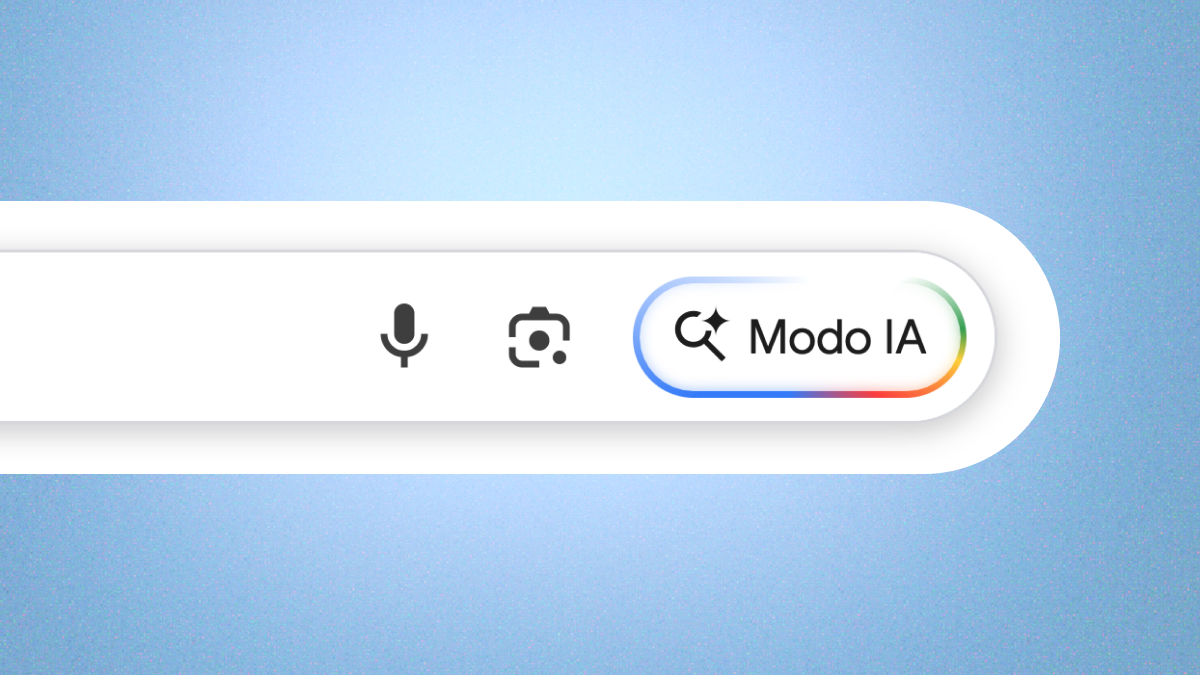Written by Juan Antonio Castillejos
Index
On October 8, Google announced the rollout of its AI Mode in 50 new countries, including Spain, and in 36 languages. After months of testing in the United States and the United Kingdom, the “AI Mode” button now appears in the Google Search menu for users who choose to activate it, introducing a new concept of search and interaction with content.
What’s different from AI Overviews?
A key difference is the user’s active involvement: AI Overviews interacts with users by default. Depending on the query, AIO can activate automatically and display its AI-generated content ahead of any other result. AI Mode, on the other hand, requires a deliberate action from the user, as it must be manually enabled. Its design and functionality are also different: it doesn’t provide summaries within the search engine, but instead offers a fully conversational experience, allowing users to interact with the AI and obtain information without leaving the page.
According to Robby Stein, Google’s VP of Product, the goal is to deliver a “coherent, conversational, and multimodal” search experience capable of answering any question by integrating Google’s entire data ecosystem. A search that’s more human, more contextual, and more immediate.
Initial data and reactions
Data and analysis compiled by Kevin Indig in Search Engine Journal point to a radical shift: over 90% of AI Mode sessions do not generate external clicks. Users find and interact with information directly within the Google environment.
Although adoption is still low, testers perceive AI Mode as faster and more natural than AI Overviews, which could encourage Google to make it the default mode. Meanwhile, publishers and creators cautiously observe how traffic attribution becomes blurred: according to SEJ, several editors report a “loss of transparency in referral paths,” complicating visibility tracking.
Privacy, misinformation, and the challenge of trust
Not all the news around generative AI is positive. A report by Brave warns that interfaces based on generative models like those used in AI Mode could expose metadata and fragments of browsing history if not properly protected by strong encryption. The issue doesn’t lie in the search engine itself, but in how AI models process and store interactions.
To mitigate misinformation risks, Google is testing BlockRank, an algorithm that filters reference sources before the AI uses them in its responses. It evaluates reputation, consistency, and quality, acting as a “cognitive security layer” to prevent low-authority citations. This would complement Google’s generative AI results by adding an extra layer of reliability.
An increasingly conversational web
At the same time, OpenAI has launched ChatGPT Atlas Browser, a browser that combines search, exploration, and real-time conversational assistance. Users can browse and ask the model to explain or summarize content on the fly. Atlas and AI Mode represent two paths toward the same idea: a type of search where we no longer expect to find results, but to engage in a dialogue with information itself.
What’s next
With the arrival of AI Mode in Spain, search is entering a hybrid stage: more predictive, more personalized, and increasingly dominated by conversational models over traditional search. The challenges of privacy, accuracy, and traffic attribution are enormous, but so are the opportunities: those who succeed in making AI recognize the value of their content will lead visibility in this new era of generative search.




